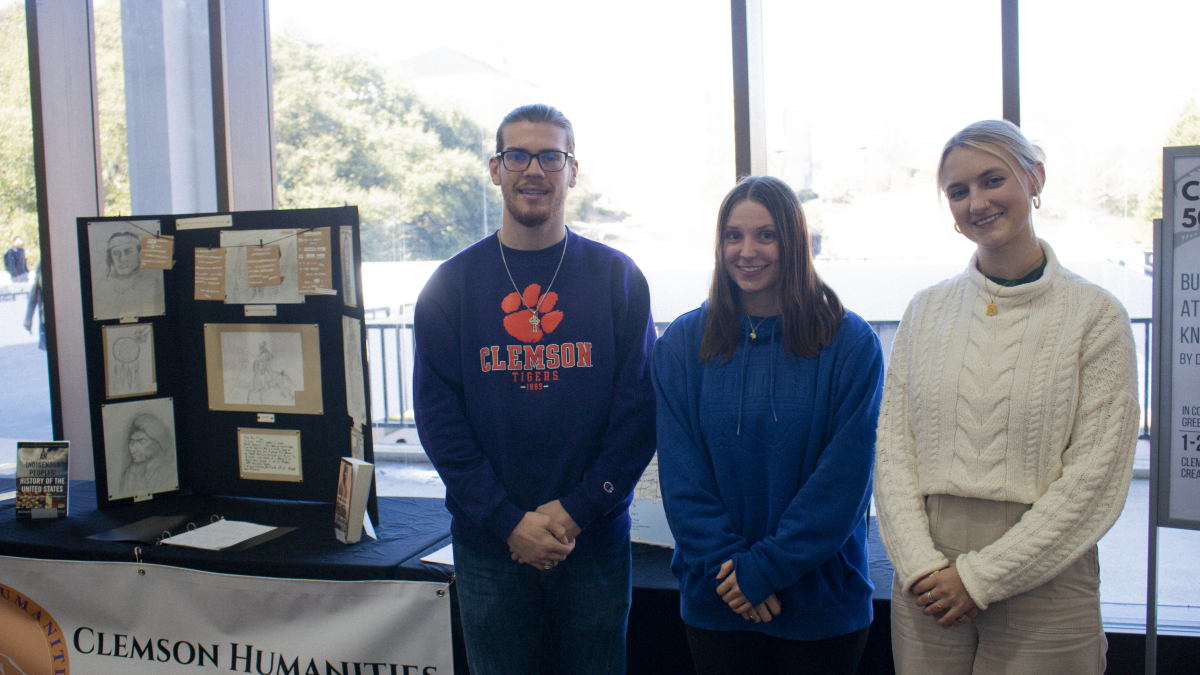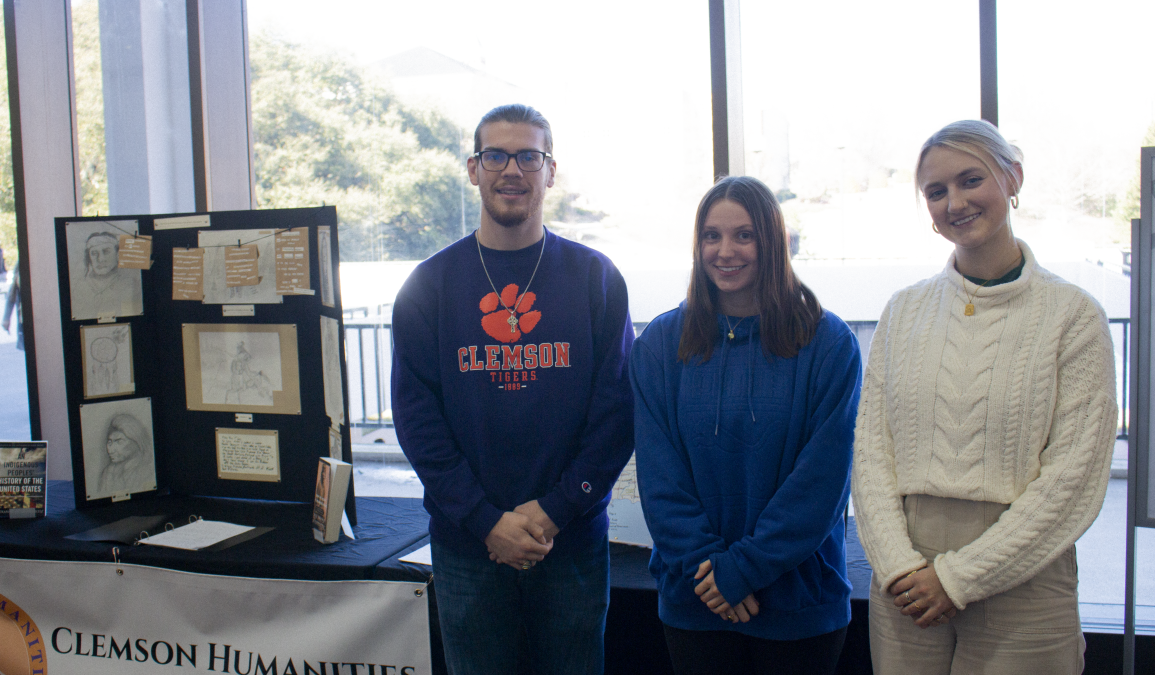
The U.S. has the highest incarceration rate in the entire world, with nearly two million incarcerated people. And yet, for most Americans, prisoners and their daily lives are, at most, an afterthought.
Professor Nancy Paxton-Wilson wants to change that.
Paxton-Wilson started working with prisoners when she was a Ph.D. student at Georgia State University. She was an English tutor and picked up a tutoring assignment for those incarcerated at Phillips State Prison.
To this day, she recalls her first time setting foot in a prison vividly.
“We drove up to just layers and layers of barbed wire surrounding the state prison … they were being treated like animals,” Paxton-Wilson told The Tiger in an interview.
When she came to Clemson, Paxton-Wilson created a Creative Inquiry class called Humanities Prison Initiative and also helped to start its sister organization, the Clemson Humanities Prison Initiative.
Averi Brice, CHPI’s first president, joined the organization during her first year. “I was looking for an issue to get behind, and this was one that I did not know a lot about, but it interested me right off the bat because of the humanities,” Brice told The Tiger in an interview.
CHPI works to provide the opportunity for hands-on involvement, as well as to build awareness around the issues of mass incarceration and the prison system. Lately, much of their work has been centered around reacclimating former inmates to life outside the prison system.
With the help of Soteria CDC in Greenville — founded by formerly incarcerated entrepreneur Jerry Blassingame — CHPI is providing newly released individuals with transitional housing, job training and mentorship.
“I think, honestly, one of the most important things Soteria does is provide a mentor, so someone who is in the community and can give them relationships and establish some support,” Brice said.
Reentry is one of the biggest problems facing those who were formerly incarcerated, and it is in part due to the stigmas around prisoners.
“People have this vision of a lot of violence. And I’m not saying that there isn’t violence in prisons, because there certainly is, but you have a vision of what an incarcerated person is like, and you realize that they’re actually just human beings,” Paxton-Wilson said.
“The very first day, I was completely impressed by the dedication, the intellectuality and just the whole atmosphere of collaboration. They were so passionate. And I just kept going back after that.”
However, formerly incarcerated people are still 10 times more likely to be homeless compared to the general public and have a 27% overall unemployment rate, much higher than the national unemployment rate.
“I think it gives people a false sense of safety to know that criminals are being put behind bars, so to speak,” Paxton-Wilson said.
“But the fact is, 95% of inmates in prisons and detention centers will be released, so treating them like animals in these situations when they are going to get released back into society, and making them actually worse than they were when they went in, does not provide safety to the public.”
In her CI class, Paxton-Wilson is looking to bring two perspectives together: incarcerated and unincarcerated students.
“Twice a month, we have a ‘Clemson Day’ where students go in and ask inmates about incarceration. Currently, both the students at Phillips and the Clemson students are reading a book on the Norwegian prison system and discussing the differences between it and the U.S. prison system.”
The Norwegian prison system provides much smaller, community-based prisons, with the end goal being that prisoners are rehabilitated and prepared to reenter society. These prisons are also designed to be able to keep prisoners close to their homes so that they may maintain relationships with family and friends while incarcerated.
Compared to the U.S. prison system, the difference is striking, to say the least.
“It feels very otherworldly when you go into these places. You walk into any one of our prisons, and this is not a humane way to put it, but it feels like a zoo. There are glass walls separating you and these people, and they’re looking at you like you’re a different species.
“And it’s very striking to me because I’m like, ‘these are all human beings, why are we separated like this? What is this relationship that is going on between us?’ And ‘what are all of these perceptions that you have going into the prison? Why are these influencing me so heavily?’” Brice told The Tiger.
With that in mind, it’s no coincidence to Brice that about 70% of those released from U.S. prisons end up as repeat offenders, which is what is contributing to the phenomenon of U.S. mass incarceration. Mass incarceration refers to the fact that the U.S. has the highest incarceration rate on the planet.
When released prisoners go to restart their lives, their lack of resources can sometimes drive them to commit another crime.
“Socially, they’re stunted. There is no serious psychological or medical help provided to prisoners. You’re probably walking out into a world that’s not only completely changed, but also you have been accustomed to these social relationships that are a complete reversal of what our relationships are like,” Brice said.
“Compound the lack of social growth that you had with the fact that there are all these barriers to reestablishing yourself in society, and it’s like asking someone to dig a hole without a shovel.”
It doesn’t help that unlike Norway’s system, the U.S. prison system is not designed to help inmates maintain outside relationships. They often have no family or friends left by the time they get released, leaving them stranded. Many formerly incarcerated people also have the added disadvantage of being members of minority groups.
So, how do we even begin to mend a broken system?
Both Brice and Paxton-Wilson stressed the importance of human connection.
“When prisoners get out, they’re given gate money, but what’s $50 going to do compared to a connection with someone who can connect you with a low-income housing community or a second-chance employer?” Brice said.
It’s this reestablishing of connections that’s important both during reentry and incarceration that can make all the difference in a prisoner’s life.
“I remember one of the biggest things one of the guys we worked with said was, ‘It is so nice to know that there is someone outside of these walls that knows who I am and knows what I’m doing and what I’m going through.’ Because even just visibility will help you a lot with, like, fighting through the struggles that you’re having if you feel like you’re completely isolated.
“These guys, you know, not only are they human beings, but they have talents. This person is a wonderful artist, and he’s given us so many drawings. It’s really sad, yeah, that his talents are completely wasted, except for on us at Clemson, kind of like highlighting them and pulling them back out,” Brice told The Tiger.
When Brice worked as a tutor at Greenville County Detention Center, she made many of these human connections. She wrote back and forth with a student who thanked her for all the work she had done. Brice worked to get his artwork sold and published while he was still incarcerated, getting the word out to the public of his talent and posting it on social media and the CHPI website.
“The joy he showed was very striking to me because to me, it was just something to try out, but for him, it was unbelievable that someone was willing to invest time in him. His biggest dream is to be a graphic designer and sell his artwork, and to know that I was able to have a hand in that has really been pushing me.
“I feel like I take a lot of things for granted, including my education, but then you look at these guys, and that’s sometimes the only thing that ties them to a sense of normalcy in their lives. Being able to help them maintain that and maintain the feeling that someone cares about their well-being has been a huge point of impact for me,” Brice told The Tiger.
CHPI will hold a reentry simulation in November, where students can experience activities that replicate the challenges inmates face when they reenter society, like trying to get a driver’s license, a job and housing.
For more information, check out their Instagram page @cuprisoninitiative. Paxton-Wilson’s CI course information is available online.
This post was originally published on this site be sure to check out more of their content.









